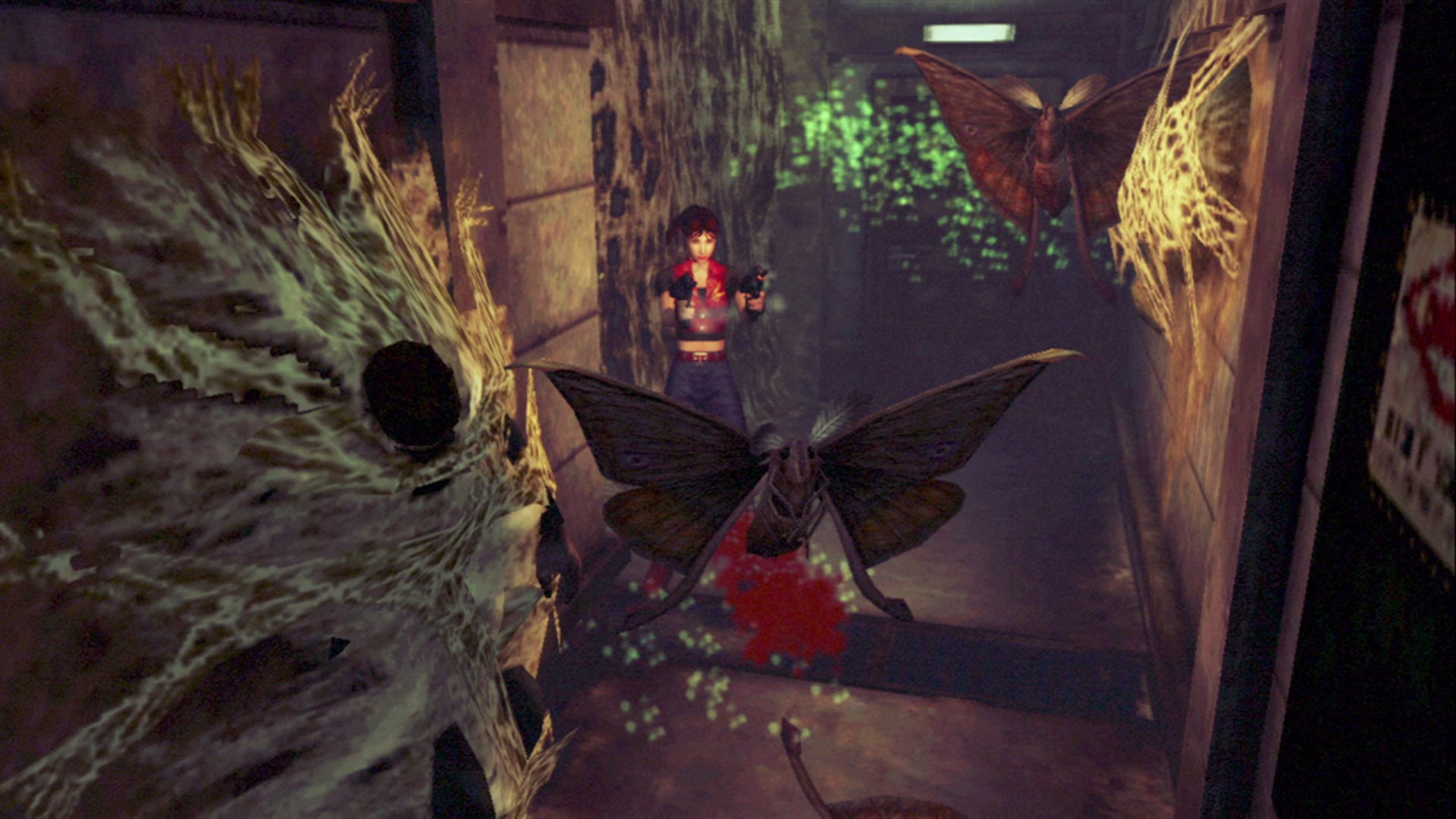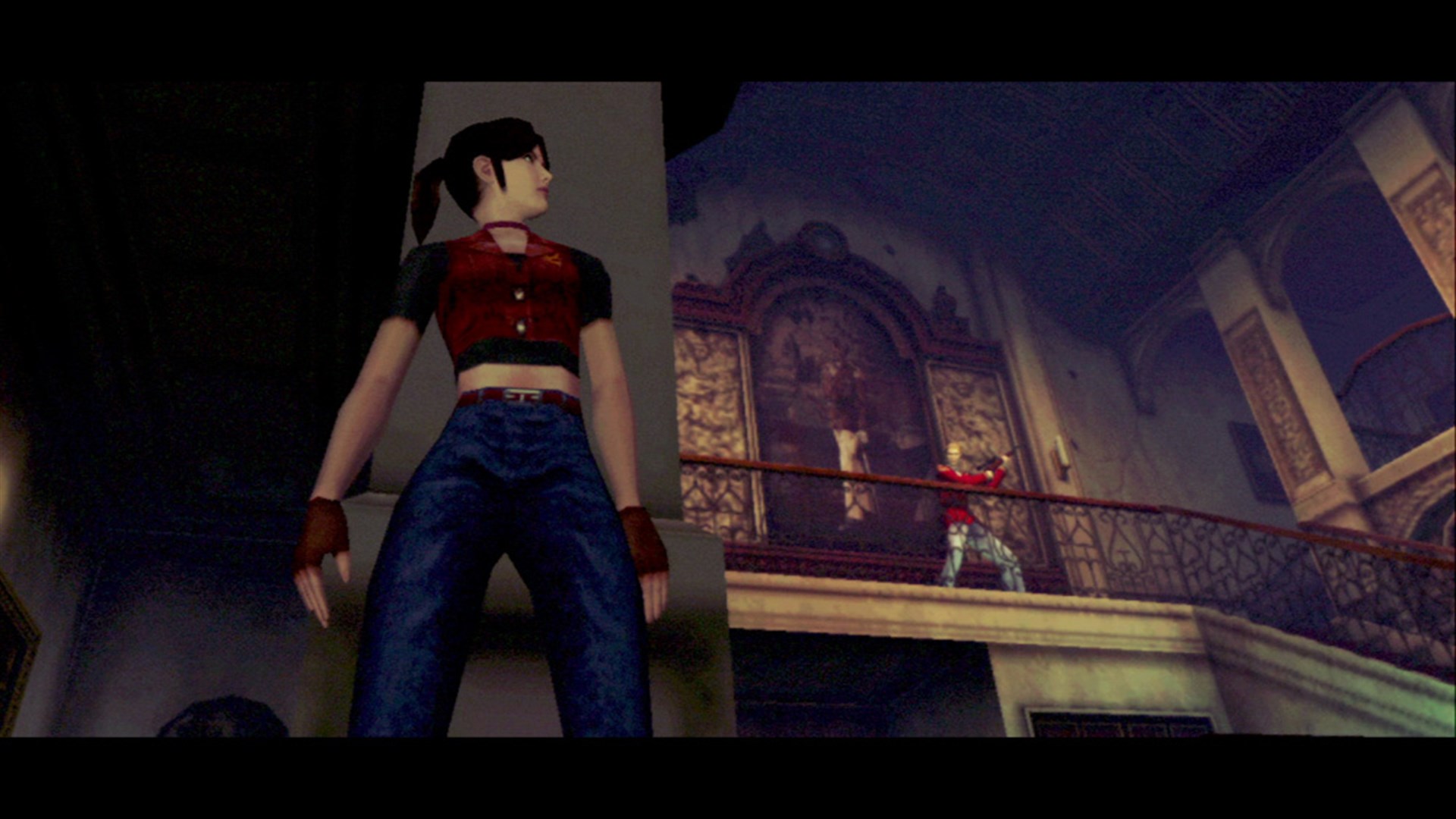Code Veronica is now the Resident Evil most in need of a remake
Despite not being a numbered entry, 2000’s Resident Evil – Code: Veronica is considered by most fans of the series to be a mainline installment. And with good reason: it significantly advances the storylines of main characters Claire and Chris Redfield, thereby acting as a solid follow-up to both the first and second Resident Evil games, and, in presentational terms, it also acts as something of a bridge between the early games in the series and the substantial reimagining that was Resident Evil 4.
Code Veronica, as we shall refer to it hereafter, first released for Sega Dreamcast. This was noteworthy, as prior to this point, the Resident Evil series had primarily been associated with the PlayStation platform, despite it also releasing on various other systems at various points. Jumping to the “next-gen” Dreamcast was a significant step forward for the series, and it seems Capcom was keen to show how the improved tech could do things that simply weren’t possible before.

Notably, Code Veronica replaced the static, pre-rendered backdrops of the original games in the series with fully polygonal environments. Rather than adopting the over-the-shoulder viewpoint of the recent remakes, however, Code Veronica maintained the fixed camera angles of its predecessors; the polygonal environments simply allowed these to be more dynamic, featuring panning and zooming rather than remaining completely static. In many respects, it built on what Capcom did with Dino Crisis in 1999, but with the more powerful Dreamcast tech allowing for more detailed environments than were possible on the original PlayStation.
Despite its lack of number, Code Veronica is actually the true follow-up to Resident Evil 2, while the game that would become Resident Evil 3 actually has its origins as a spin-off side story. The reason for this seeming confusion is that the two games began development almost in parallel; the game that ended up as Code Veronica started life as the result of Capcom’s difficulty porting Resident Evil 2 to the Sega Saturn platform, with the team opting to start the development of an original game rather than wasting time on a port that might never happen.
A side story ending up as “Resident Evil 3”, meanwhile, was the result of Sony bartering for limited exclusivity on the title — and, according to producer Shinji Mikami, the team’s desire to keep numbered installments on PlayStation, while other Resident Evil games would have subtitles. The veracity of this latter claim is somewhat in doubt, though; many believe that it was Mikami simply attempting to play down the Sony deal.

Code Veronica was first announced in 1998 and released in February of 2000. It struggled somewhat on release in comparison to its peers in the series, with its relatively low sales mainly attributed to the difficulty the troubled Dreamcast platform had attracting a significant market. That said, although suffering relatively low sales in comparison to previous entries in the series, Code Veronica did well in comparison to other Dreamcast titles, and received considerable critical and public acclaim from those who actually did play it.
Thankfully, the game wasn’t doomed to obscurity by remaining on the Dreamcast platform; an expanded, enhanced version known as Code Veronica X was ported to PlayStation 2 and, subsequently, Nintendo GameCube, and this version was given an upscaled HD rerelease on PlayStation 3 and Xbox 360 in 2011, with the latter version also running on Xbox One and Xbox Series consoles. It was also ported to PlayStation 4 in 2017, so it’s still easy to play today. Or perhaps it’s better to say that it’s still easy to buy a copy today.
Because while Code Veronica is widely regarded as one of the best installments in the Resident Evil series — when judged by the standards of the games’ original releases, anyway — today, in a world where the excellent remakes of 2, 3 and 4 exist, it is arguably the entry that has aged the least gracefully, and thus the one that is in most need of modernisation.

There are a few reasons for this. Most notable among them is the fact that unlike the more recent releases of Resident Evil Zero and Resident Evil, no version of Code Veronica features a modernised analogue control scheme.
That means you’re stuck with tank controls, and despite how much Resident Evil purists insist that you “have” to play the early games in the series with these controls “otherwise you didn’t really beat them“, I think we can all agree that they suck. It’s been long enough now that I think we can all honestly say, without guilt, that the arguments about tank controls “giving you a greater sense of weight to your movement” and “adding tension to the experience” are complete bollocks; they’re outdated, not fun and have no place in a world where pretty much every game controller for modern platforms has two analogue sticks.
Yes, you can learn to deal with tank controls. Yes, the game was designed with them in mind, meaning that it’s relatively rare you’ll need to change direction quickly in order to deal with threats all around you. But they’re still clunky, cumbersome and an active barrier to enjoyment for modern audiences, which makes Code Veronica ripe for a revamp in the style of the other Resident Evil remakes.

Secondly, there are certain aspects of Code Veronica’s overall design and structure that are simply questionable by modern standards. There is more than one situation in the game where it’s possible to get yourself into an unwinnable situation. Thankfully, this doesn’t occur in classic adventure game style by allowing you to progress without a key item you need to solve a puzzle, but rather there are several boss fights in the game that it’s possible to get locked into without having the weaponry or ammunition required to deal with them effectively.
For example, the first time I ever played Code Veronica on Dreamcast back in the day, I somehow managed to completely miss the grenade launcher, making the boss fight against a Tyrant that occurs in the back of a transport plane almost completely impossible to beat. Of course, not expecting something like this to happen, I hadn’t made multiple saves, and thus my only option was to start the game over from the beginning.
“Oh, but that’s classic survival horror”, the purists will, again, say, to which I reply, “well, there are certain aspects of classic survival horror I think we can all agree we can do without these days”. Sense of vulnerability? Good. Constant fear that you won’t have enough resources to survive? Good. Being able to completely miss an item that is near-essential to success? Very bad indeed.

Again, this is something you can learn to live with, particularly if you’re aware of the potential for it occurring beforehand. And I should probably add that Code Veronica remains, to this day, an excellent entry in the Resident Evil series despite these elements that haven’t aged all that well.
Its use of elements of Gothic horror rather than focusing entirely on American-style horror works extremely well, making for some of the most memorable and nightmare-inducing scenes in the early series. Its antagonists in the form of the Ashford siblings are absolutely excellent, and there’s some great “Wesker is a bastard” work going on in the game’s latter hours.
Just… imagine how good all that would be with a modern control scheme and the added prettiness of the remakes. Just imagine. Here’s hoping Capcom don’t forget about it, because I would absolutely play the crap out of a Code Veronica remake, and I’m certain I’m not the only one.
Join The Discussion
Rice Digital Discord
Rice Digital Twitter
Rice Digital Facebook
Or write us a letter for the Rice Digital Friday Letters Page by clicking here!
Disclosure: Some links in this article may be affiliate links, which means we may earn a small commission if you make a purchase after clicking on them. This is at no additional cost to you and helps support Rice Digital!
- Letter from the Editor: passing the torch - June 30, 2023
- Super Woden GP 2 is looking promising - June 30, 2023
- Inti Creates is making a 32 bit-style Love Live action platformer - June 26, 2023







